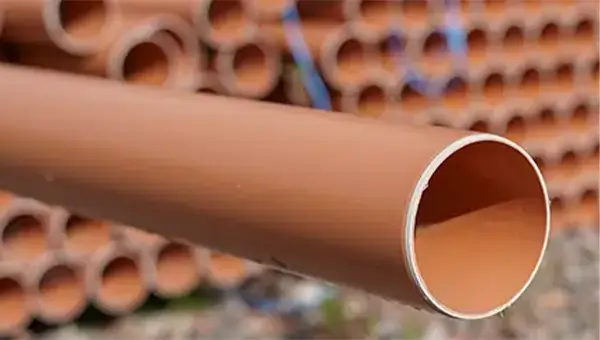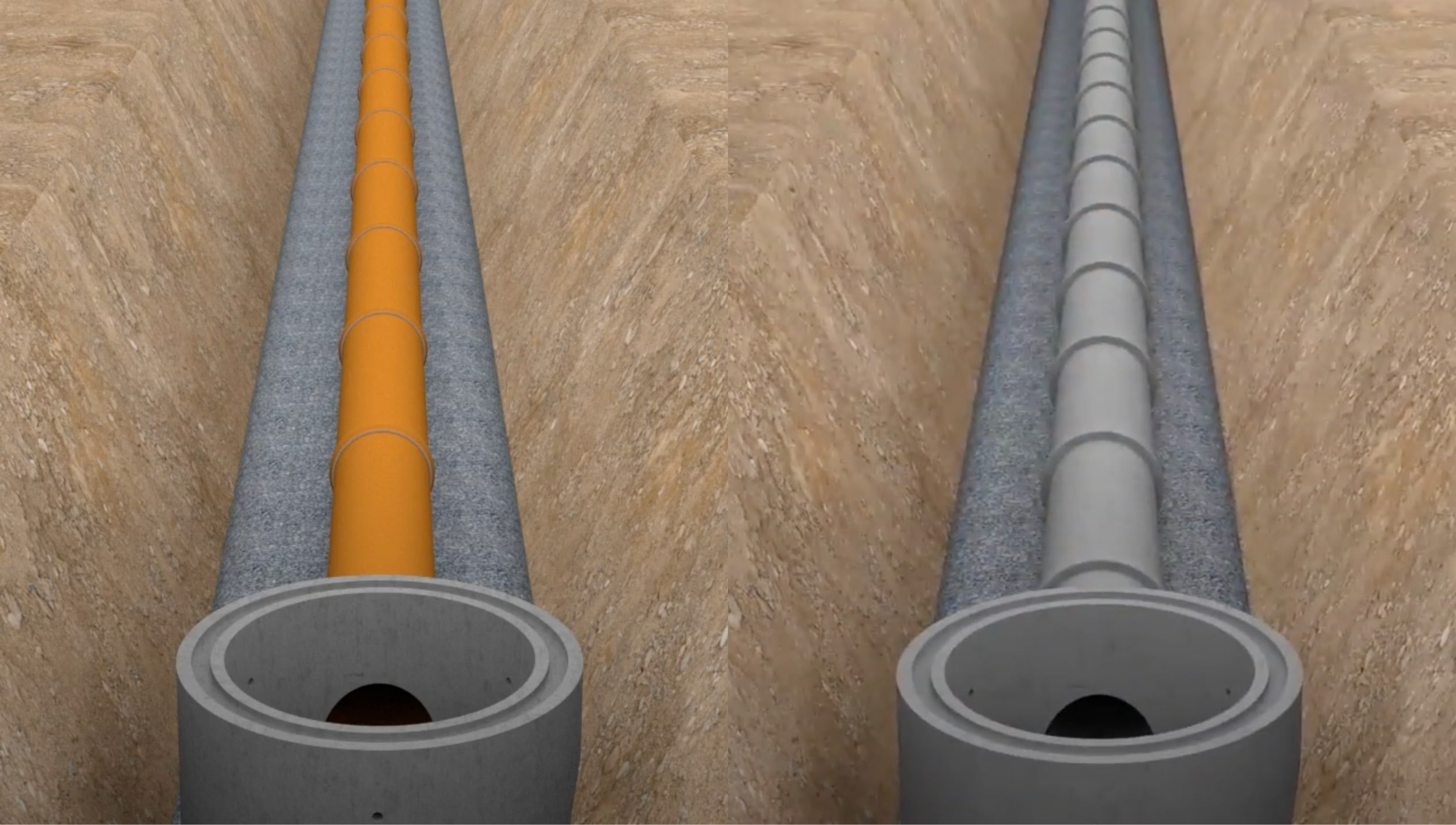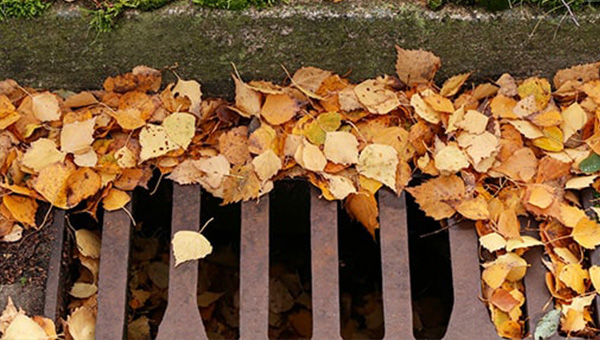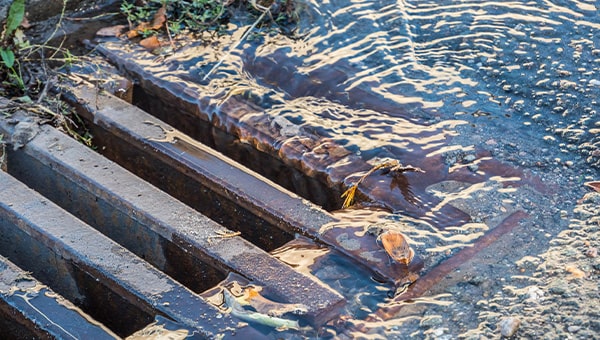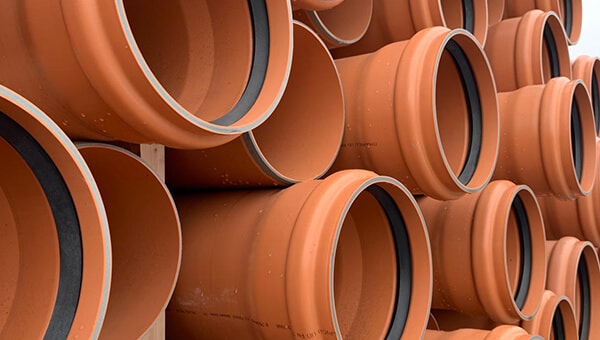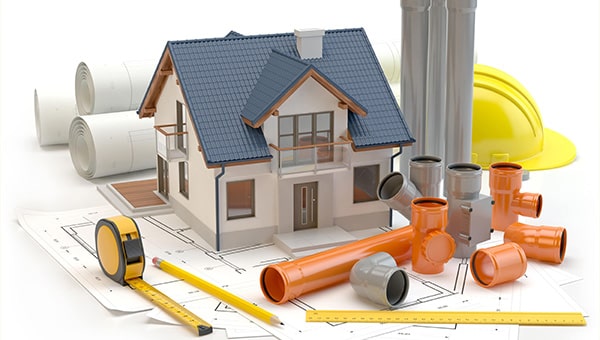
Most modern homes, built after 1970, will have separate drains for disposing of rainwater/surface water and foul water/wastewater to the most appropriate destinations. However, if a property has been renovated/extended, or had a new appliance installed by an unqualified plumber or inexperienced DIY enthusiast, there is a chance that the wrong connections were made…and this could be causing a water pollution problem.
But what is the difference between rainwater and wastewater? What happens if your house was built before 1970? And how can you tell if you have the wrong connections? These are the questions that this article will attempt to answer.
What is the difference between rainwater and wastewater?
In the context of drainage systems, rainwater (or stormwater as it is often described) refers to the untreated water that falls as rain and is collected from roofs, driveways and roads. This water is safe to return to the environment, assuming it doesn’t fall on potentially contaminated areas, such as fuel-station forecourts where oil and fuel spills may be present.
Wastewater, on the other hand, refers to the water that drains from the toilets, sinks, baths and showers, washing machines and dishwashers in your property. It can be further broken down into foul water from your toilets and greywater from sinks etc. Both types of wastewater have to be transported by the drainage system to local wastewater treatment works.
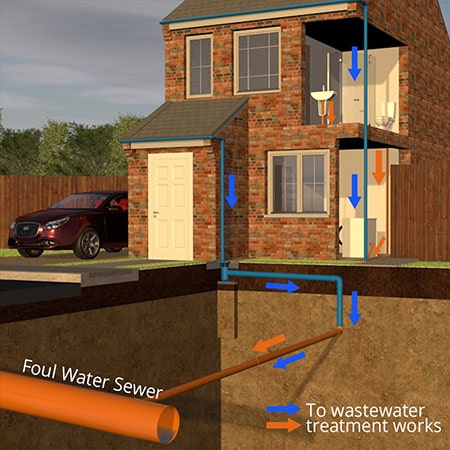
What is the difference between separate drains and combined drains?
When the sewers and drains, as we know them today, were first built in Britain during the Victorian era, they were designed simply to get foul drainage and wastewater away from people’s properties. This was in an effort to tackle diseases like cholera and typhoid, which were spread by poor sanitation, and no consideration was made towards the potential for environmental pollution. These first drainage systems were designed as “combined” systems, meaning that rainwater, surface water and wastewater all flow into the same drains to be transported to the nearest river for discharge.
As our towns and cities began to grow, however, and the need to treat wastewater before it reached any watercourse became of paramount importance, having all of our drainage needs serviced by one combined sewer system became impractical. Because of this, properties built after 1970 began being designed with separate drainage systems where possible. One system is used for transporting dirty wastewater to the local treatment works, before being discharged to a watercourse, while the other is used to transport clean rainwater/surface water straight to the nearest river or stream.
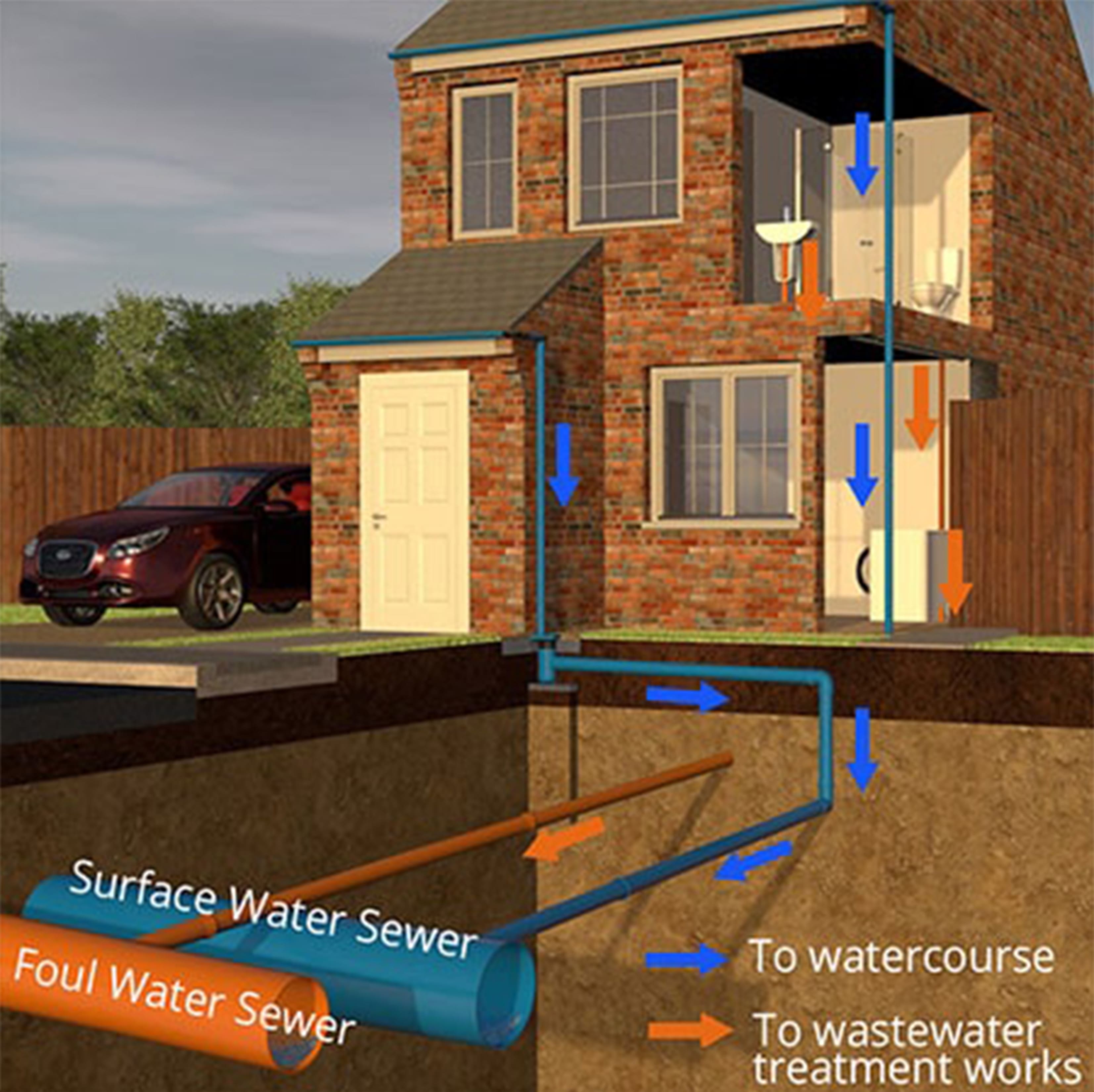
It’s estimated that around half of the properties in Britain now have separate drainage systems.
When are properties exempt from having separate drains?
If your property was built before 1970, it will undoubtedly have a combined drainage system, meaning all the water drained from your property goes to the same place. If this is the case, you do not need to worry about where the types of water drain to, nor are you required to upgrade your system to separate drains.
In some cases, even if your home was built after 1970 with separate systems, all the water from your property may still flow into a combined sewer system down the line. This is because, while new properties can be designed to utilise separate drains, the current infrastructure in the area may not support it yet. If this is the case, you should still operate your drains as if you were on a separate system, but you need not worry about the potential for causing water pollution if rainwater and wastewater does mix.
How could your home be causing water pollution?
If you have a separate system and wastewater from your home flows into a rainwater drain, the untreated water could be polluting the local rivers and flowing out into the sea or onto local beaches. This could be happening without you even realising.
Whilst the intention of separate sewers is good in theory, in practice, not enough people are aware of them. With more and more housing being developed nowadays, and the trend for self-builds and DIY improvements ever on the increase, the misconnecting of drains has, unfortunately, become quite common. For example, if you were installing a new dishwasher at home and found the easiest way to drain the water was to instal an external pipe that emptied the dirty water into the outside grid where the downspout was...would you give a thought to whether that grid connected to a combined system or a separate one? Unless you are an expert in the drainage systems, you’ve probably never heard of separate drains or the need to drain water to different systems. If this is the case, your new dishwasher could now be polluting your local river system.
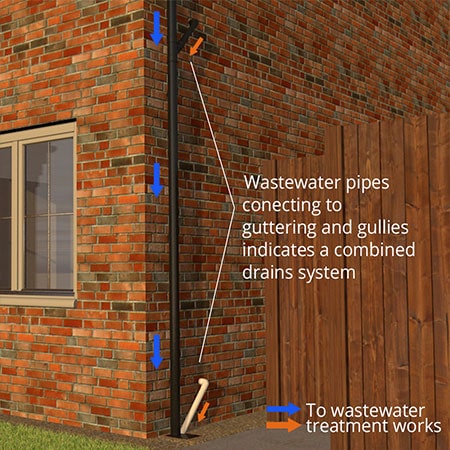
How do you recognise right or wrong drain connections?
First of all, you need to find out what type of drainage system your property has. Ideally, this information will have been provided in the survey when you bought the house...but this won’t always be the case.
Top Tip: If you are looking to buy a new house, make sure you ask your surveyor or contractor to include the properties drain connections in their report.
If your property survey didn’t include this information, or you have no idea where your copy of the report is anymore, it’s best to call in a qualified plumber to check your drain connections. You might also be able to find out from your local authority or water company, as they should know what type of sewerage system your property originally had. If you discover you have a separate system and your home has had extensions built on, or has external drainage pipes servicing wastewater appliances, you may still want to have a plumber check them, as any newer connections made could still be incorrect.
For properties with a separate system, your downspout, which channels rainwater from your gutters, should discharge into one grid/gully and any external wastewater pipes should discharge into a separate one, each of which will (hopefully) be connected to the appropriate drains. If you have a separate system and see an external pipe discharging into the same grid as the downspout, it is a clear sign your drainage connection is wrong, and it needs to be rectified as soon as possible to avoid further water pollution.
Who is responsible for checking the drainage connections?
If you are a homeowner or landlord, the responsibility is yours. You must check you have the correct connections for all rainwater and wastewater plumbing, and put them right if you don’t.
If you live in a rented property, you aren’t responsible for putting right any wrong connections, but you should still point them out to your landlord and ask that they put them right.
In Summary
Drainage connections are something few of us ever think about. As long as our waste is taken away and our properties are protected from stormwater flooding, we don’t really care about where it goes. Unfortunately, many of our properties could be polluting the local river systems, as well as the wider environment, and will continue to do so if we turn a blind eye. It is therefore essential that we all take responsibility for our wastewater to ensure we know where it goes and that our properties have the right connections.
For more information on the gullies around your property and how they work, check out our gullies guide for more information.
If you have any questions about your drainage systems or need further advice about how to identify incorrect connections, contact JDP today. Our technical team is always available to help with all of your drainage needs.


